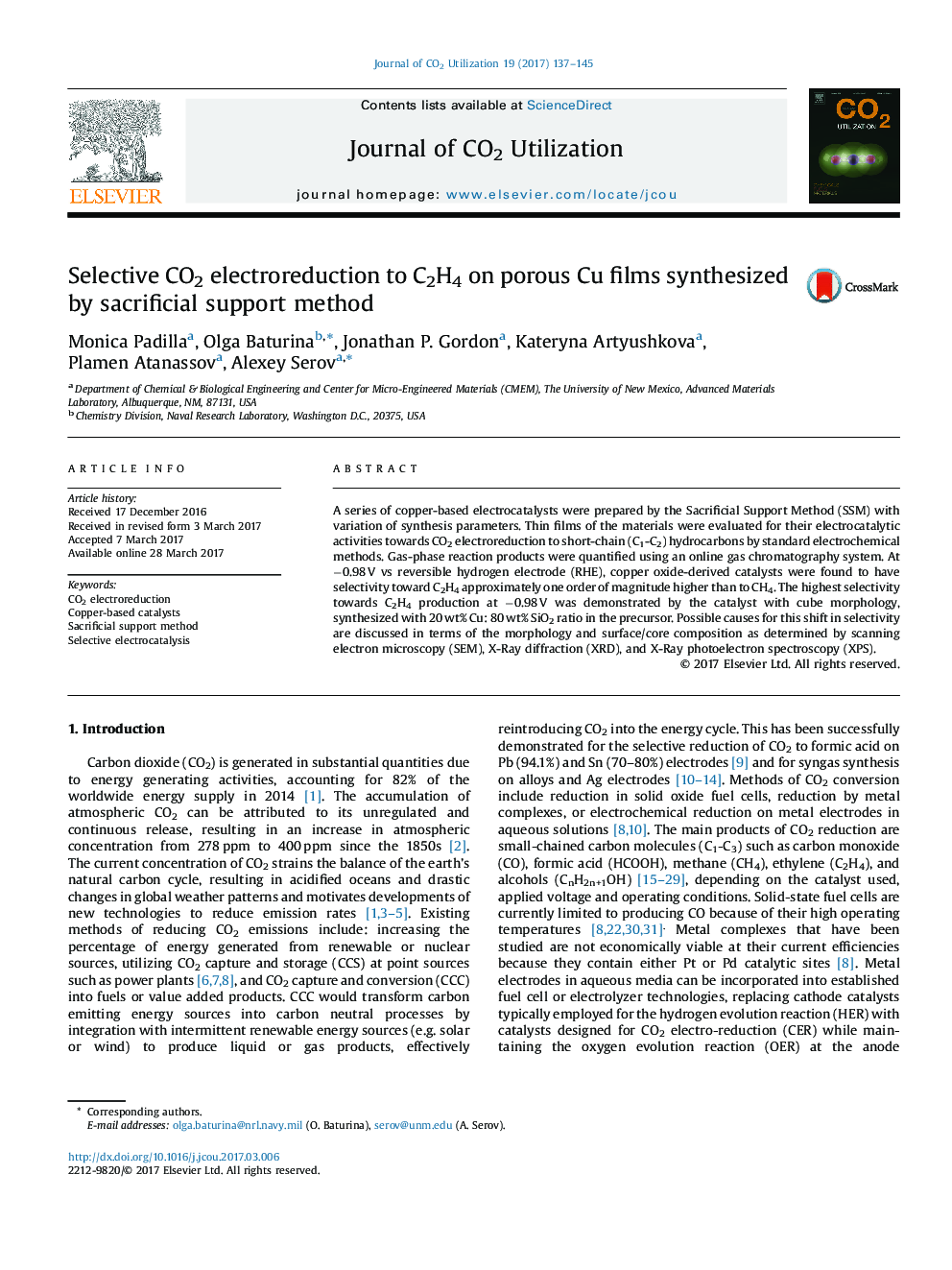| Article ID | Journal | Published Year | Pages | File Type |
|---|---|---|---|---|
| 4757701 | Journal of CO2 Utilization | 2017 | 9 Pages |
Abstract
A series of copper-based electrocatalysts were prepared by the Sacrificial Support Method (SSM) with variation of synthesis parameters. Thin films of the materials were evaluated for their electrocatalytic activities towards CO2 electroreduction to short-chain (C1-C2) hydrocarbons by standard electrochemical methods. Gas-phase reaction products were quantified using an online gas chromatography system. At â0.98Â V vs reversible hydrogen electrode (RHE), copper oxide-derived catalysts were found to have selectivity toward C2H4 approximately one order of magnitude higher than to CH4. The highest selectivity towards C2H4 production at â0.98Â V was demonstrated by the catalyst with cube morphology, synthesized with 20Â wt% Cu: 80Â wt% SiO2 ratio in the precursor. Possible causes for this shift in selectivity are discussed in terms of the morphology and surface/core composition as determined by scanning electron microscopy (SEM), X-Ray diffraction (XRD), and X-Ray photoelectron spectroscopy (XPS).
Related Topics
Physical Sciences and Engineering
Chemical Engineering
Catalysis
Authors
Monica Padilla, Olga Baturina, Jonathan P. Gordon, Kateryna Artyushkova, Plamen Atanassov, Alexey Serov,
